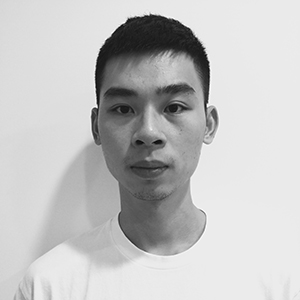 FINALIST
FINALIST
I'm evolving into a box.


Category : STUDENT
By Wei-Yu Chen (Taiwan)
“I’m evolving into a box.” is an iron box with an irrelevant mechanical arm and brain. The mechanical arm has been manufactured by aluminium pipes and two servo motor. The brain, Raspberry pi, gets data from a remote computer with NEAT (Genetic algorithm + Neural Network algorithm) running in realtime. The iron box, just like a newborn life, learns how to use the unknown arm. The whole period of this installation’s exhibition demonstrates how artificial intelligence drives daily objects. Through this process, the installation transmits a paradoxical condition.
The main discussion of this artwork is about the transition period of artificial intelligence evolution. What can we see in this transition period?
Nowadays, lots of artificial intelligence products have been created. Many incredible research projects and developments, like AlphaGo developed by Google DeepMind, US Military Robot Dog, and other great emerging technologies have shown us some new dimensions of technology. However, they are not the final goal of artificial intelligence. They are simply the transition period of artificial intelligence evolution.
What can we see beyond those technologies? Engineers try to make things biological, but it doesn’t seem to be so simple. Actually, engineers sometimes create a status that exists between biological and non-biological and this status can feel strange. Therefore, I try to demonstrate this subtle status. When I created this work, I was wondering what would happen if an artificial intelligence algorithm was installed into a lifeless object? After simulating what it would look like, the answer was unimaginable, and that is why the algorithm works. The end result was that I combined an iron box and an artificial intelligence algorithm, training a box act like a box.
At first, I used SketchUp to simulate my installation ideas, including size, material, the components fitness. Due to a continuous bump, I chose metal as my material.
The mechanical arm is composed by aluminium pipes and two servo motors. These pipes have been drilled and built up by a variety of specific screws. The main body of the installation is a ready-made iron box. The iron box is made of aluminum pipes and one Raspberry Pi which as a central controller while two decoders act as the reference of machine learning algorithm.
I use NEAT (Genetic algorithm + Neural Network algorithm) for the installation to have the ability to “think”. Due to the speed of calculation, I installed the algorithm on a remote computer which runs in realtime. The computer calculates the motion signal and receives the installation’s feedback signal repeated and continuously, which allows it to figure out the next step.
Cutting machine, CNC milling machine, 3D Modeling and Design Software
JUDGES, COMMENTS
-
Hiroya Tanaka
Professor at Keio University, Representative of SFC Social Fabrication LabThis works cleverly connects AI technology with the physical world. I think FAB plays a central role in connecting technological innovation in software to physical things.






